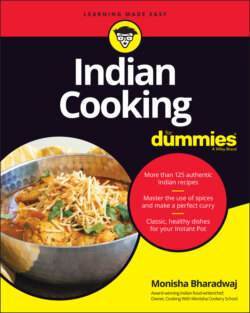Читать книгу Indian Cooking For Dummies - Monisha Bharadwaj - Страница 21
Tea and the British
ОглавлениеHave you heard that India is one of the world’s largest producers of tea? Much of it is drunk in house, so we have a nation of tea lovers. The industry as we know it today was introduced to India by the British. The Dutch had brought tea back to Europe from the 17th century, and the British considered it to be both a medicinal and a refreshing drink.
China was the only country growing tea at the time, and the British wanted to topple China’s monopoly. So, they smuggled opium into China with the aim of exchanging it for tea and even got Bengali farmers to grow opium for them instead of staple crops needed to feed the masses. This did not impress the Chinese.
Early tea plantations were set up in the hilly regions of Assam from 1837. Soon after, tea estates mushroomed in Darjeeling. Both these eastern areas had perfect growing conditions, and even today, driving through the beautiful mountain roads, you can only admire the step plantations carved into every hillside.
In India, everything needs to be spiced with masala, so it isn’t surprising that the brew was enhanced with ginger, cardamom, and fennel seeds to make Masala Chai (Spiced Tea; see Chapter 21). The Indian word for tea is chai, and I’ve heard it comes from the Chinese word cha. This delicious brew has caught the world’s fancy (although strangely called chai tea, which translates as “tea tea,” in the West) and seems to be a much-loved flavor in lattes and ice creams.
